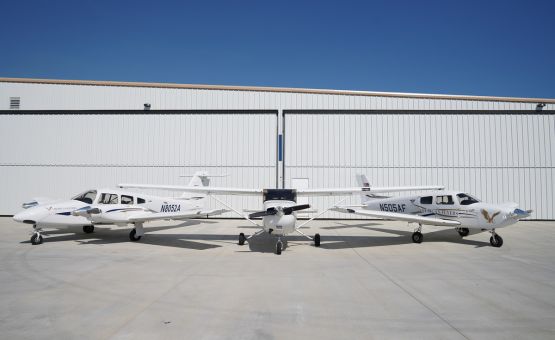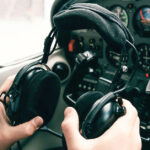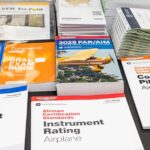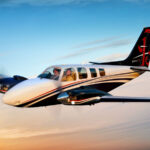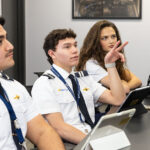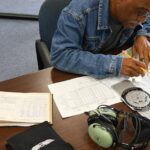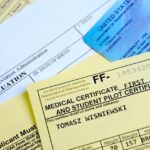From singles, to twins, to turboprops, and some jets, since 1939, American Flyers has been training pilots in all different makes and models of airplanes. In all of that time, we have learned that the pilot must consider the right airplane for the course that they are considering. Does this mean that they shouldn’t train in the airplane they own? Not necessarily. But as I have said many times in my various articles, just because you can do something doesn’t always mean you should.
We see many pilots who purchase aircraft with and without turbochargers, with and without retractable landing gear, and with and without very complex avionics systems, and yes, many with large and powerful engines. In many of these cases, the pilot purchased the aircraft before or soon after starting their training. Neither is problematic, providing that they understand both the nature of the aircraft and their training.
Many people think that training in their airplanes will save them money. The truth is that when you do primary training of any type in an airplane that wasn’t made for primary training, things break, and maintenance costs increase.
For a student enrolling in the Private Pilot course, our primary goal is to teach attitude flying and make sure that they understand what it means when we say, “Stay ahead of the airplane.” Furthermore, we conduct simulated engine failures, stalls, and many different types of landings, not to mention emergency procedures. These can wreak havoc on a turbocharger, and the student can endure significant challenges by trying to control a 300hp airplane in slow flight or short field landings. When it comes time for their checkride, they will also be responsible for demonstrating a full working knowledge of their airplane and its systems, many of which are very complex. They are much better off learning all of this in one of our airplanes that have been designed for these tasks by using simple systems and procedures. Once they have completed their training and checkride with us, then we can assist them in applying their newfound knowledge to their airplane.
Students who have decided to pursue their Instrument Rating have different challenges when using their own airplanes. Remember, Instrument Training aims to solidify your basic foundation and knowledge of the skills that you will need to safely fly in IMC (Instrument Meteorological Conditions). As with the Private Pilot course, we start with attitude flying and slowly build up the student’s skill set. These maneuvers include climbs, turns, descents, and unusual attitudes. Some require rapid power changes, which can be harmful to turbochargers. Some of these maneuvers can be challenging for the student when dealing with the toque and “P” factor from a large high horsepower engine. As we progress through the training, we deal with holding patterns and stabilized instrument approaches. Both of these require a great deal of focus and concentration, let alone worrying about landing gear, engine power, and excess speed. The training aircraft that we use are slow and stable platforms designed to allow you to focus on the task at hand without worrying about the complex systems of your aircraft. Many of these airplanes have very complex avionics systems which take time to learn. You will be responsible for knowing and operating all the avionics system’s possible functions in your airplane on your checkride.
Now we look at the Single Engine Commercial Pilot course. A glance at the Commercial ACS (Airman Certification Standards) will show you the types of maneuvers and skills that need to be demonstrated on your checkride. These include Lazy Eights, Chandelles, Accuracy Landings, and more. Each of these ensures that you can fly an airplane with accuracy and precision. Turbo-charged aircraft, aircraft with larger engines, or aircraft with delicate landing gear are not necessarily ideal for these maneuvers. Constant engine cuts, power adjustments, and hard landings in an aircraft that was not designed for training can cause many headaches down the road. High horsepower engines can make the maneuvers somewhat difficult and uncomfortable when dealing with the forces of torque and the “P” factor.
As I explained earlier, the purpose of your training program is to ensure that you have the proper skills and basic foundation necessary to be a safe and proficient pilot. This has less to do about the airplane per se and more to do with your ability to learn the proper procedures. More importantly, the simulators that you will use to enhance your education closely mirror the performance of our training fleet. This allows you to focus on your education without having to learn a new airplane at the same time. The main exception to this is the student who has several hundred hours in their airplane. However, regardless of the time in type, the training abuse to the airplane is still the same.
We have found that the best experience and education come when students use our aircraft and our simulators to take their checkride. Then, we take all of the knowledge and education and focus it on their specific airplane, flying the missions they typically fly when they have their family and friends on board. This accomplishes two tasks. The first task is to make sure you understand what you are doing. The second task is to ensure that you understand how that pertains to your airplane. Fighter pilots don’t just start out flying in an F-16. They transition from slower and easier aircraft to gain their knowledge and experience. This is no different than what we do.
The last discussion point is the perceived cost savings of flying your own airplane for training. In general, we have found that training in a customer’s own aircraft generally saves them about 25% of the cost of training. However, after adding in ramp costs, fuel costs, and the additional training to complete programs under part 61 in a customer’s own aircraft, the savings turn out to be much less.
American Flyers’ fleet of aircraft includes the Cessna 172R, 172S, and the brand new Piper Pilot 100i’s. These are complemented by brand new Frasca RTD simulators. The Cessna 172’s have traditional round dial, G1000, and G3X platforms. The Piper Pilot 100i’s have the G3X platform. The G3X gives us the ability to display flight instruments in both traditional round dial and glass displays. It’s like having two aircraft in one. Our multi-engine training fleet consists of Piper Seminoles, and we have both traditional round dial and G1000 avionics. No matter what your training needs are, American Flyers has you covered with high and low wing aircraft and a variety of avionics layouts.
If you are considering training in your aircraft, speak with us first. I can assure you that we will recommend whatever is in your best interest based on your specific circumstances.




